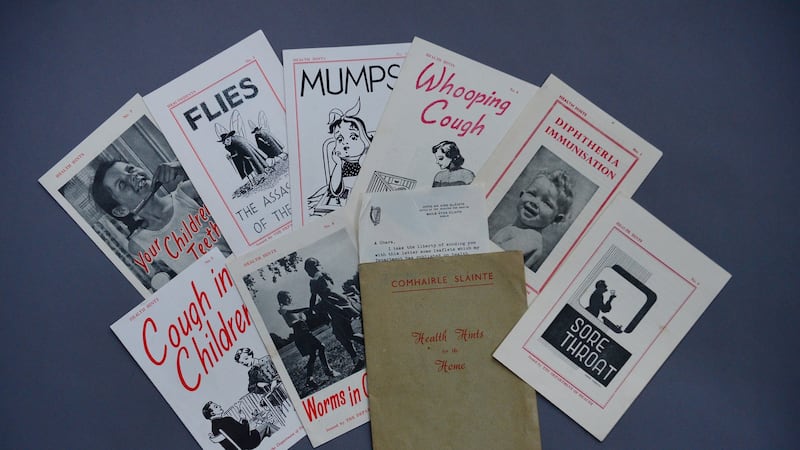In the mid 1950s, the Department of Health circulated an envelope of eight pamphlets to houses countrywide, with an accompanying letter from minister for health James Ryan.
These “Health Hints for the Home” offer an insight into the chief public health concerns – and contemporary medical advice – of that decade. Though some of the advice is now obsolete – even dangerous – some remains relevant today.
The fourth pamphlet focused on sore throats, and how to treat them, at a time before penicillin became prescription-only.
Here is what was included in the fourth pamphlet.
Causes
There are many causes of pain and discomfort in the throat, some of them serious, some trivial. One of the trivial causes is sleeping with the mouth open. If you sleep like this, the back of the throat sometimes feels dry and painful when you wake but by the time you have finished your breakfast the discomfort is gone, and all is well. Persistent discomfort at the back of the throat often accompanies a cold in the head, or influenza. Swallowing and coughing increase the discomfort . . . This is distressing, but not serious.
Relief

The best way to relieve the discomfort is to gargle several times a day with hot water containing a little common salt or bread soda – about an eggspoonful to the tumbler of water. The common cold and influenza may also cause discomfort to the larynx – that is the region of the Adam’s apple. This is due to laryngitis, and may be accompanied by huskiness of the voice, dry irritating cough, and pain on coughing and talking. Gargling won’t get down to the sore spot in the case of laryngitis, and the best remedy is to inhale steam from a jug of boiling water, breathing the steam deeply through the mouth twice or three times a day. Friars’ Balsam – a teaspoonful to a pint of water – may be added if desired, to give fragrance to the vapour. It helps if the head is covered with a towel whilst doing this. It is also helpful to rest the voice as much as possible, and to keep out of cold atmospheres . . . A cough sedative is also helpful . . . These causes of sore throat are troublesome but not serious.
Tonsillitis
Tonsillitis is another matter. Tonsillitis should always be treated as serious, even though it many cases it is mild, and easily cured. With tonsillitis, the pain is sharp, and is much increased by attempting to swallow. The pain is felt at the sides of the throat, just behind the angle of the jaw. Moreover, the glands in the neck, below the jaw line, are usually swollen and tender to pressure. If the infection is at all severe, there will be fever with a temperature sometimes accompanied by headache, vomiting, dirty tongue and loss of appetite.

If tonsillitis is suspected, the throat should be examined by a doctor first, before any treatment is started. It is most important to make sure just what is the nature of the infection . . . perhaps it’s diphtheria.
Many people nowadays have the idea that a sore throat may be adequately treated by taking a few sulfa tablets and sucking a few penicillin lozenges. This is not always so, however, and it is advisable to seek medical advice in every case of fever accompanied by sore throat, particularly in the case of a child . . . neglected tonsils can lead to rheumatism, diseased kidneys, and a multitude of other serious complications.
Health Hints for the home
Part 1: The menace of diphtheria
Part 2: If your child has mumps
Part 3: Flies on food
Part 4: Pain in the throat
Part 5: Coughs in Children
Part 6: Whooping gasp for air
Part 7: Dental health
Part 8: Worms in children










